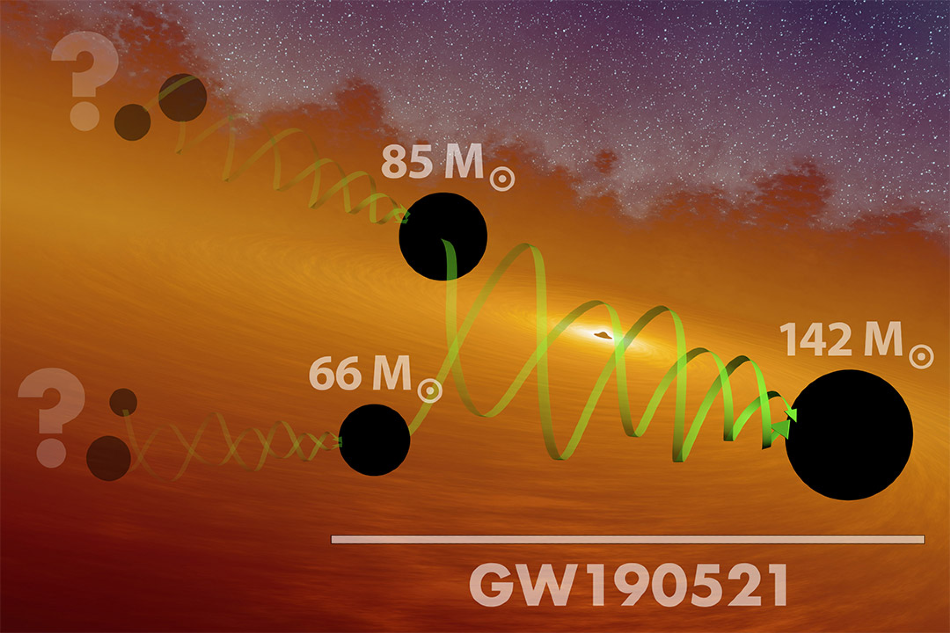The Virgo Collaboration and the LIGO Scientific Collaboration recently reported the discovery of GW190521, the biggest gravitational wave binary viewed so far. Researchers from the Rochester Institute of Technology played a crucial role in finding and analyzing the event.

The team detected the signal by using the National Science Foundation’s Laser Interferometer Gravitational-wave Observatory (LIGO). The mass of the two inspiraling black holes was around 85 and 66 solar masses, leading to the creation of a black hole remnant of 142 solar masses, offering the first-ever clear view of an “intermediate-mass” black hole.
We’re seeing something more massive than we’ve seen before, past the point where we thought that we could form black holes. It’s therefore suggesting that our previous understanding was incomplete or maybe there’s more out there than we previously envisioned.
Richard O’Shaughnessy, Associate Professor and Member of CCRG and the LIGO Scientific Collaboration, Rochester Institute of Technology
Apart from the fact that the black holes in this event were huge compared to those detected earlier, the signal denotes that they could have been spinning around their axes, at angles not aligned with the axis of their orbit.
The uneven spins of the black holes probably cause their orbits to wobble, or “precess,” as they coiled toward each other.
Jacob Lange ’20 PhD (astrophysical sciences and technology) is a recent alumnus who offered maximum support for the analysis, with the help of the RIT-developed parameter estimation code and direct comparisons to numerical relativity simulations to calculate and validate the special features of the event, such as the spin and masses of the black holes.
Lange said that he was excited regarding the discovery as it challenges earlier speculations regarding black hole formation and raises essential new questions about the basics of how gravity works.
We thought it would be almost impossible for us to measure precession at this high mass, but somehow we were able to do it and it’s not really clear why that was the case. It’s not what we expected to be able to detect and hopefully we can learn a lot more from it.
Jacob Lange, Rochester Institute of Technology
The discovery and its impacts have been described in two papers, which were published in Physical Review Letters and The Astrophysical Journal Letters. A total of 10 scientists from RIT’s Center for Computational Relativity and Gravitation are the authors of the studies.
Moreover, RIT contributed by offering computer simulations of Albert Einstein’s equations by co-authors Professor Carlos Lousto and Research Associate James Healy, which were employed to compare the signal with and forming a waveform catalog.
Earlier black holes detected by the European Virgo and the U.S. National Science Foundation LIGO are considered to have formed by collapsing stars, theory proposes that black holes with masses between 65 and 120 times the mass of the sun cannot be formed by this technique.
This probably indicates that intermediate black holes may develop by another technique, such as Pacman-like behavior in which black holes grow by combining with smaller black holes.
As LIGO and Virgo keep showing us, the universe is full of surprises.
John Whelan, Professor, Rochester Institute of Technology
Whelan is also a principal investigator of RIT’s group in the LIGO Scientific Collaboration. The group is an active one with 17 faculty, students, and postdoctoral researchers.
Journal Reference:
Abbott, R., et al. (2020) GW190521: A Binary Black Hole Merger with a Total Mass of 150 M⊙. Physical Review Letters. doi.org/10.1103/PhysRevLett.125.101102.
Source: https://www.rit.edu/



More Stories
Video Compares the Size of Science Fiction Starships
NASA Technology to Reveal Crop Health Insights for Agriculture Industry
Get Over 40 Hours of Training On IoT, Java, Robotics, Data Science and More for just $39